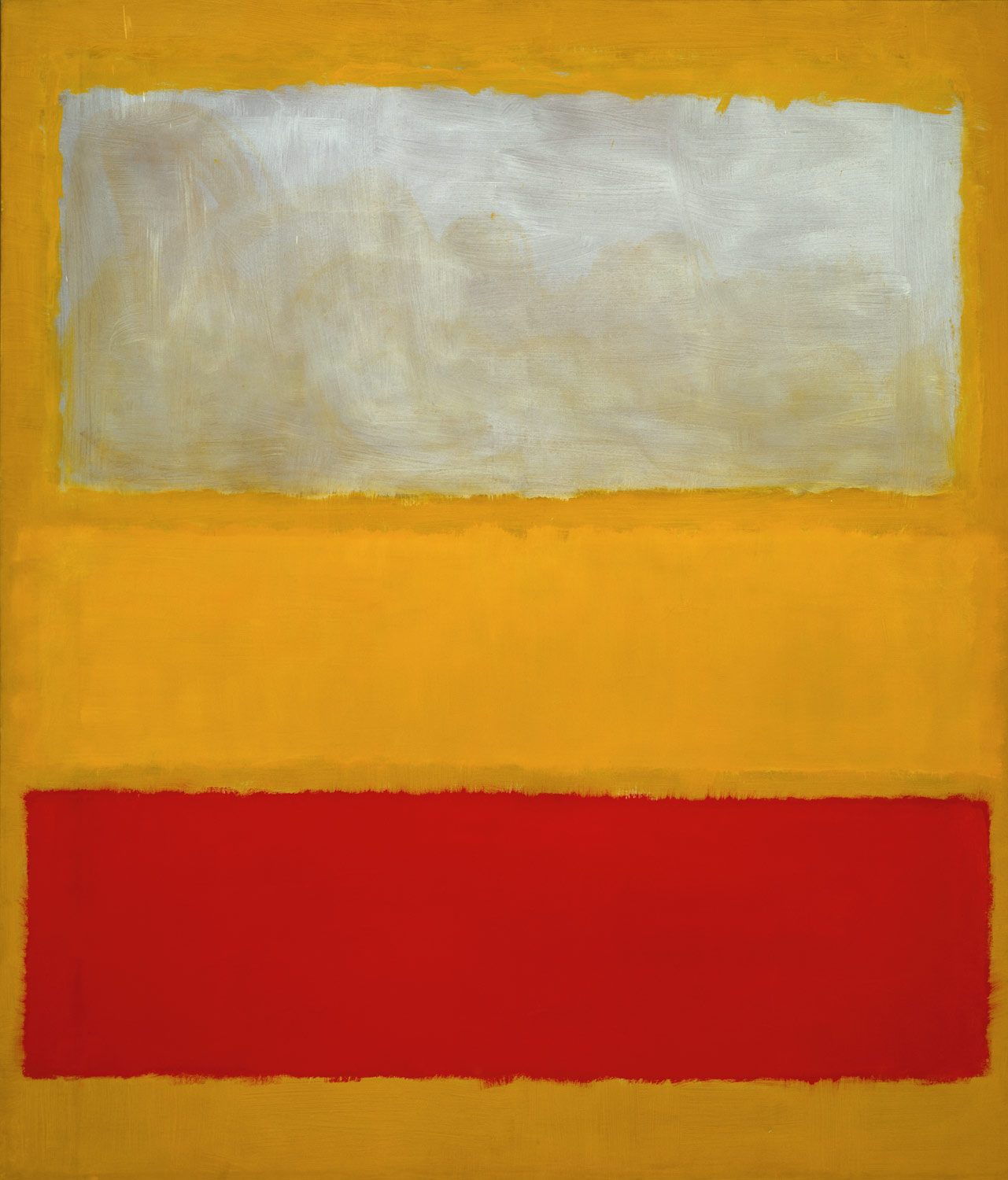

No. 13 (White, Red, on Yellow), 1958
Mark Rothko (American, born Russia, 1903–1970)
Oil and acrylic with powdered pigments on canvas
Rothko's signature compositions after 1950, and for the rest of his career, consisted of three or four horizontal bands of color. Works like No. 13 (White, Red, on Yellow) epitomized what he said was "the simple expression of the complex thought." The simplification of means and structure was not a formal exercise, but a vehicle through which to experience powerful, unverbalized emotion and revelation.
Rothko's forms are reduced, but they are not geometric. Edges and boundaries are soft, frayed, feathered—merging imperceptibly as one ethereal field of color transitions into another, producing an effect that is almost halo-like. Luminosity is achieved with translucent veils of diluted pigment, sometimes applied with rags and sponges rather than brushes. In some areas, the paint is scumbled; in other places, it acts as a stain, saturating the canvas fibers. Using various types of wet media and varying the thickness of his paint layers, he sometimes changed the orientation of his pictures in the studio, depending on how their colors harmonized. Indeed, in No. 13 (White, Red, on Yellow), some drips travel upward, indicating that Rothko worked on this picture upside down for a period of time.
In Rothko's work, the large scale of his paintings envelops the viewer, thereby creating a palpable and intimate experience. "Historically," he said, "the function of painting large pictures is painting something very grandiose and pompous. The reason I paint them, however . . . is precisely because I want to be very intimate and human."
Mark Rothko
One of the most esteemed abstract expressionists and greatest painters of the 20th century.
Mark Rothko belongs to the generation of American artists who completely revolutionized the essence of abstract painting. His stylistic evolution, from a figurative visual repertoire to an abstract style rooted in the active relationship of the observer to the painting, embodied the radical vision of a renaissance in painting. Rothko characterized this relationship as "a consummated experience between picture and onlooker". His colour formations indeed draw the observer into a space filled with an inner light.Rothko always resisted attempts to interpret his paintings. He was mainly concerned with the viewer`s experience, the merging of work and recipient beyond verbal comprehension. Rothko was an intellectual, a thinker, a highly educated man. He loved music and literature and was very involved in philosophy, especially in the works of Friedrich Wilhelm Nietzsche and of ancient Greek philosophy and mythology.
Rothko was a protagonist within the movement of American painters who became known as the Abstract Expressionists. First formed in New York City during the inter-war years, this group was also called the New York School. In all the history of art, they became the first American artists to receive international recognition as a significant movement. Many among them, including Rothko, have become legendary figures.